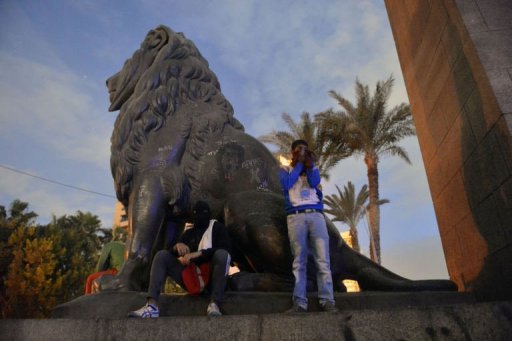CAIRO: Since the introduction of the money laundering law of 2002 in Egypt, about 12 perpetrators have been caught, according to sources at the Ministry of Interior. The country has also become an international partner in cooperative efforts aimed at money laundry, with last week marking its most recent participation in financial corruption talks.
Representatives from nine Mediterranean countries, including Egypt, Jordan, Turkey and Cyprus convened this month in Malta to discuss means for money laundry prevention. The MEDA program, principal financial instrument of the European Union for the implementation of the Euro-Mediterranean Partnership, organized the discussion.
According to Brigadier Mohsen El-Yammani, who represented Egypt in the MEDA talks, Egypt, in comparison with other countries, doesn’t attract many money launderers; the illegal practice is directly correlated to the economic stability of the country.
Nonetheless, Egypt has been taking strides in the realm of fighting money laundering. In fact, the country has been removed from the blacklist of countries failing to take adequate measures against money launderers. The list is compiled by the Financial Action Task Force (FATF), “an inter-governmental body whose purpose is the development and promotion of national and international policies to combat money laundering and terrorist financing, reads the organization’s Web site.
Money laundering is the transformation of money acquired through criminal practices into legally approved funds. The process is comprised of starting a fictional project, then presenting to the tax authorities the illegally acquired money as profit. Once taxes are paid on the fictional profits, the law recognizes the money as legitimate.
The 2002 law recognizes money laundering as a punishable crime – providing for a sentence of up to seven years in prison and confiscation of the money in question. It incriminates every person and entity involved in the process. Pre-dating the law, the person who had acquired the money through illegal practices was the only criminal recognized by the law; those assisting the person in laundering money faced no charges.
The newly implemented regulations include the establishment of an independent unit within the Central Bank to look into the issue. Regulations also hold financial institutions responsible for reporting questionable transactions.
The government also established a national committee in 2005 representing different governmental entities to fight money laundering and coordinate efforts. The “know your customer (KYC) technique has also been implemented by banks. KYC, which entails answering a number of questions related to the entity opening the account, regulates account opening in banks to better assess the money source of future customers.
According to El-Yammani, there are a number of practices used for money laundering. If the total is more than LE 10 million, it is usually transferred abroad to start the laundering process. El-Yammani says that sometimes there are different stages for laundering money, often involving cross-border transactions. Thus international cooperation remains a key issue.
According to official reports, the different venues used in money laundering include the stock market, jewelry businesses, real estate and land trading and transactions between banks and non-existent companies.
El-Yammani cites several examples of money laundering. One of the best known means is to organize an art exhibition, where paintings, commodities with no set value, are sold for high prices. Usually, gangs specialized in money laundering organize these exhibitions for a sum of money; all the cash used in the process is one-sourced, belonging to the person who acquired them illegally.
El-Yammani notes that this process and similar ones do not, however, have negative effects on the economy; especially since part of the fictional generated profit is given to the government in taxes. Other processes have numerous effects on the economy, such as the devaluation of the national currency or direct harm to the economic system, according to El-Yammani.
For example, illegal money might be used in real estate trading at fictional prices which in turn affects currency values. For example, a man might buy a piece of land worth LE 1 million, stating in the legal contract that it costs only LE 100,000 – he would then sell it a year later for LE 20 million. While all the money used in the transactions belonged to this specific man, the unrealistic increase from LE 100,000 to LE 20 million has a negative effect on currency value.
Another type of money laundering might affect a country’s economy by affecting one of its key industries, explains El-Yammani. For example, money launderers might take the rights for a dealership in a certain country. Since their interest would be limited to setting up a venue to legitimize funds, the dealership would deteriorate, which in turn would affect the mother company and subsequently the country of origin.
According to El-Yammani, some countries intentionally overlook the first type of money laundering because in some ways it benefits the economy of the country to which money is transferred. However, international cooperation and information sharing are vital to fighting money laundering.



